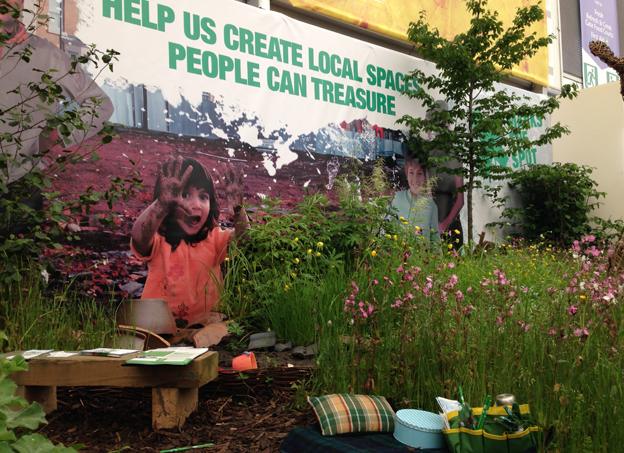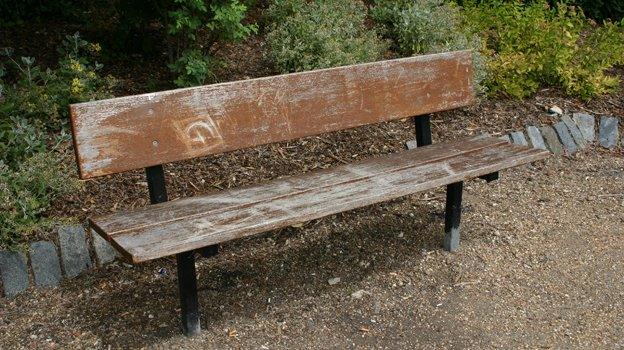Parks in peril
- Published
- comments

Cuts to funding has left the UK's parks "on the edge of a precipice", according to a landmark report to be published next month by the Heritage Lottery Fund (HLF).
The research into the quality of Britain's 26,000 public parks is expected to conclude that new ways of financing their maintenance are essential to prevent a return to the crisis days of the 1990s. MPs then described our urban green spaces as "shunned, neglected and vandalised".
The warning about the decay of UK parks came at a meeting held among the manicured and flawless exhibits at the Chelsea Flower Show.
"We know from talking to park managers, friends groups and the public that we need to do something pretty serious if we are not going to face the same crisis we had in the past," Drew Bennellick from HLF said.
"Our research, published next month, shows that we are right on the edge of a precipice at the moment."
Although many parks still outwardly look in good condition, the survey has identified how "neglect has started to creep back in". In some places key infrastructure has not been properly maintained and lakes and ponds have not been dredged, next month's report will reveal.
Public sector funding for discretionary services like parks is projected to fall by 60% or more over the next ten years, whoever wins the election in 2015.
"Everybody realises that the old model won't do us for the next decade," says Graham Duxbury, chief executive of the environmental charity Groundwork. "This isn't a case of muddling through."

Mr Duxbury believes the notion that community volunteers can take responsibility for the UK's vital green infrastructure is misplaced. "Communities want to do more but not many of them can make that whole journey towards managing an asset like a park, running a business or a social enterprise," he says. "You very easily get to burn out."
The Heritage Lottery Fund is to fund a series of pilot schemes testing new ways of bridging the gap between what state and community can together provide and what Britain's public parks need to prevent decay.
"It might be looking at endowments, public subscriptions, park improvement districts working with local business or ecosystem services where people pay parks to deliver draining solutions, for instance," says Mr Bennellick.
Designer Wayne Hemingway, who chairs the Building for Life organisation, thinks big business should provide the answer. "One of the reasons [David] Cameron doesn't go on about the Big Society any more is that it is not as big as he would like it to be," he says. "Big business is doing pretty well - it would be very easy to show the value to them of taking part ownership of a park."
Mr Hemingway suggested limited naming rights might be offered to local companies, echoing the 19th century philanthropic traditions that created the public park as we know it. For instance, among the earliest were Philips Park in Manchester and Peel Park in Salford, named after their benefactors, the politicians Mark Philips and Sir Robert Peel.
Groundwork has designed an exhibit for the Chelsea Flower Show that focuses on the little patches of green, often in unpromising places, that can be enormously valuable to local communities. It is these smaller parks that the charity fears are most at risk when funding is cut.
"The people who come to Chelsea share a love of all things green," Mr Duxbury says. "The message we want to get across is that that is also true for those who can't come to Chelsea, who don't have a large garden where they can experience the calming, restorative, healing benefits of green space."